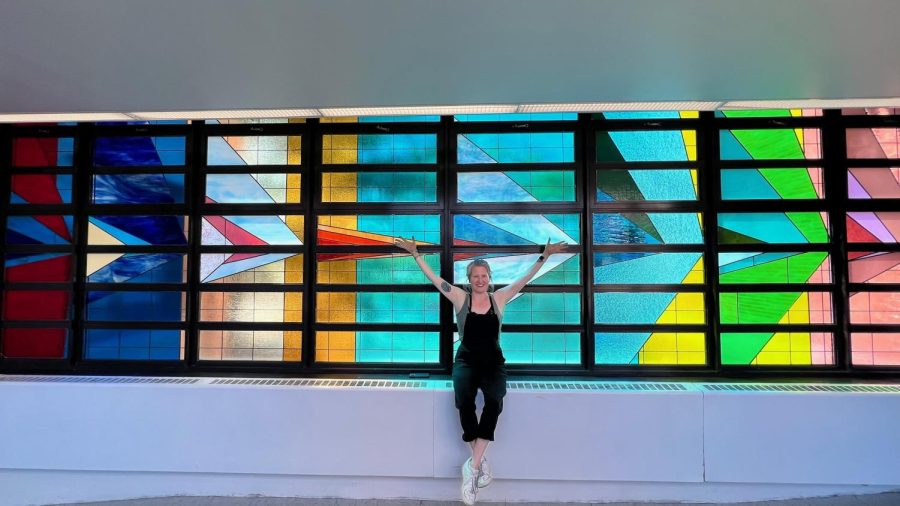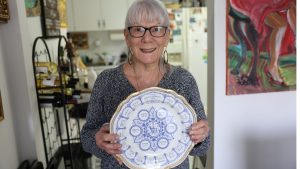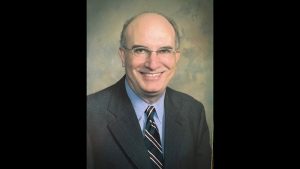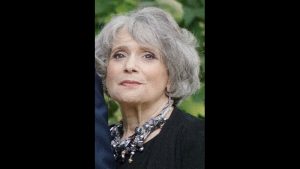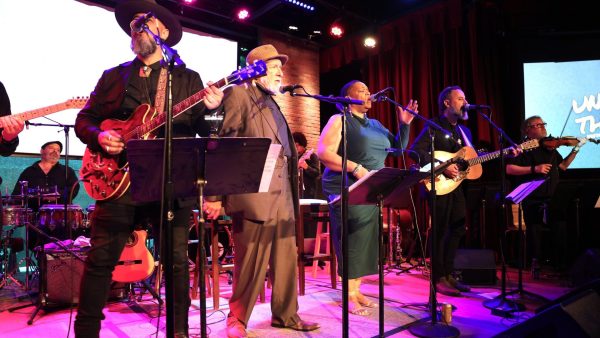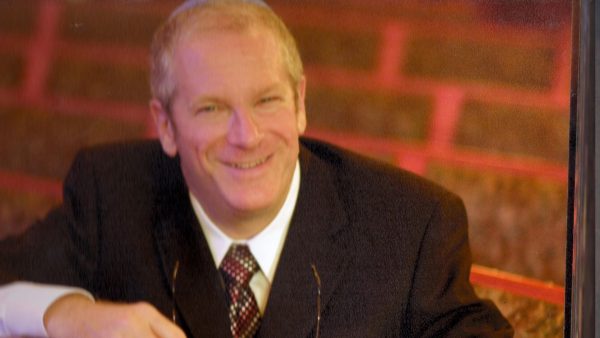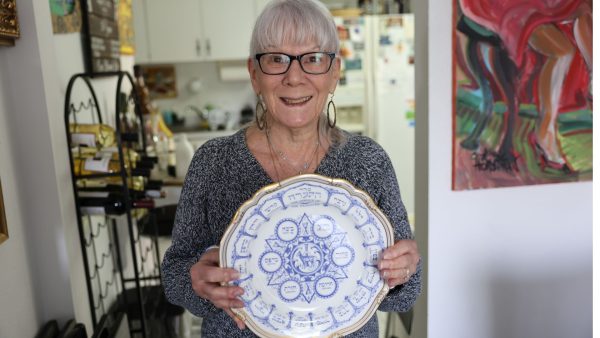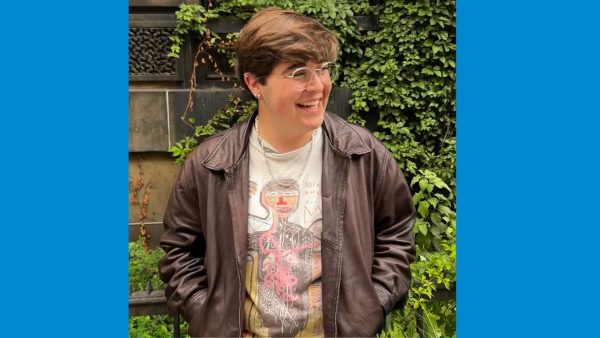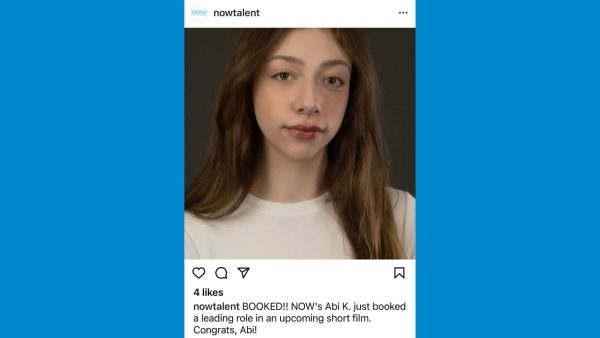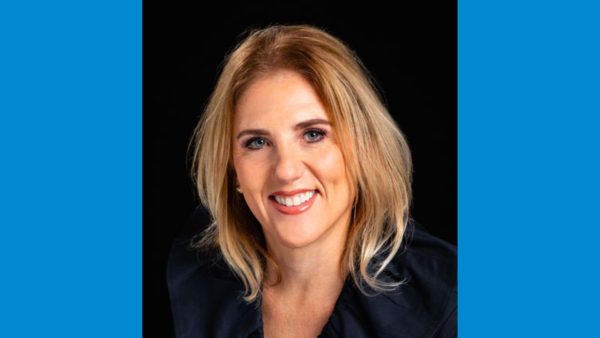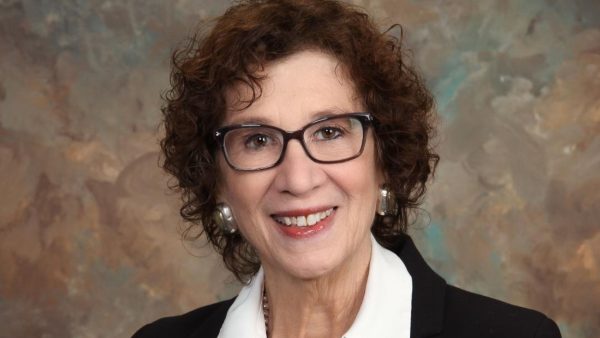Jewish St. Louis artists turning public spaces into beautiful giant works of art
Published August 12, 2022
Two prominent public art projects created by Jewish St. Louisans were unveiled in July. The installations used much different media and they are 1,000 miles apart, but both feature the talents of veteran artists.
A pocket park sits on the corner of DeMun and Southwood avenues in Clayton. Just to the north of DeMun Park is a newly minted mural, a passion project of Jeff and Randy Vines, owners of STLStyle. The 33’-wide-by-22’-high mural depicts a giant bee on a swing surrounded by a bug’s-eye view of flora. It’s only a few yards from an actual swing set. The design sprung from the fertile minds of the father-daughter team Robert and Liza Fishbone.
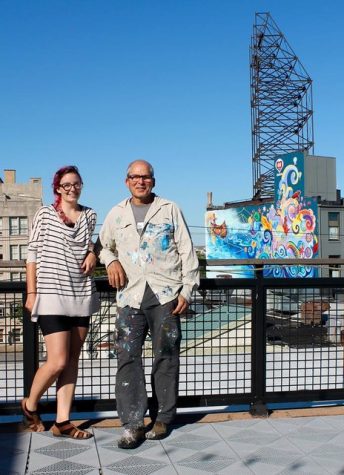
“Everything we do is site specific, said Robert Fishbone, 71, a member of Central Reform Congregation. “We also always look at the history of the area. We want the people who are going to live with it to feel like they own it. We started with basically a blank slate. And we probably went through 30 different designs.”
Fishbone described the final selection as whimsical and a fun adventure. The bee was always part of the image, but it was Liza Fishbone who suggested making it the focal point.
“The two of us have to agree on the design,” he said. “I do all the actual renderings and she’s the chief artist when we actually paint it.”
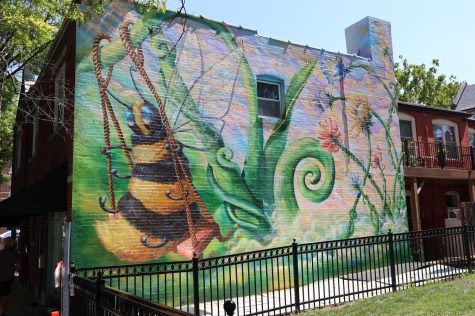
Jeff Vines was the key instigator in getting the mural approved by the city of Clayton and funded by private donations. He lives in the DeMun neighborhood and had been looking for an opportunity to use the artistic talents of the Fishbone team. They previously created a giant mural on the STL-Style store on Cherokee Street. After the DeMun Park design was conceived, Vines and the Fishbones worked with the Clayton Architectural Review Board or the Public Art Advisory Board to get approvals.
“It was a long, hard road and a lot of bumps along the way,” said Vines, 44. “What was encouraging is that almost from the start, the public sentiment seemed to be highly in favor of it. And that was actually to our surprise.”
Ellie Balk
Ellie Balk remembers attending United Hebrew Congregation when she was growing up and finding a special beauty in the synagogue’s stained glass. Balk is now a sought-after artist who specializes in large-scale murals. She recently completed a prominent stained-glass installation.
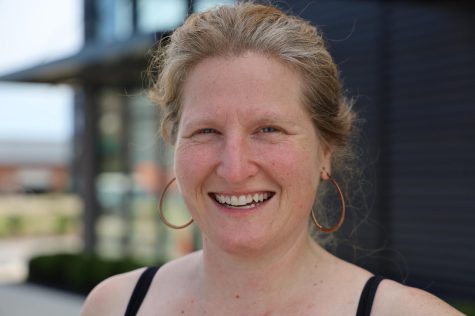
Balk, who works in both St. Louis and New York City, was chosen to oversee a school beautification project in Elmhurst, Queens. That’s where the elementary school PS 007 holds the distinction of serving the most ethnically diverse neighborhood of New York. The diversity of the students offered Balk an ideal opportunity to use her data and art skills. She started out by surveying students about where they and their parents were born. The answer: 25 different countries. Balk then created a formula represented by color triangles and other shapes to illustrate those countries.
It took her six weeks to complete the 160-square-foot project on a walkway in the school. Balk has worked on other big public art projects before, but not stained glass at this scale. That required her to use lead caning, which is typically used in church and synagogue windows.
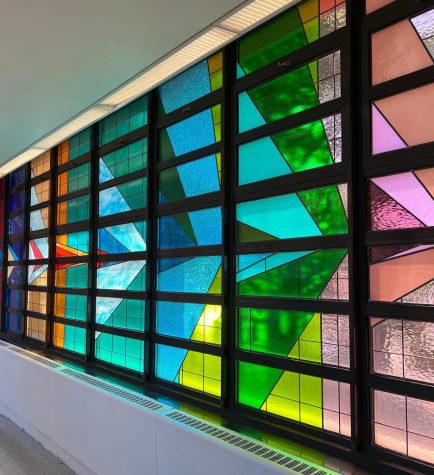
“That created the most challenging part of this project, which was that I had to learn a new skill,” said Balk, 45. “There were so many limitations with this piece because nearly all the windows were different sizes. The data is all about where students were born and where parents were born.”
The colors signify what color the students think of when they think of home, she said. Balk prepared much of the installation in her New York studio, with the assistance of a master glass cutter from Japan. This was the first phase of a multi-year enhancement project for PS 007. Next up will be the opposite side of the walkway, followed by a ceiling mural that connects the two stained-glass installations.
“I’m really happy with the design and how it came out,” Balk said



